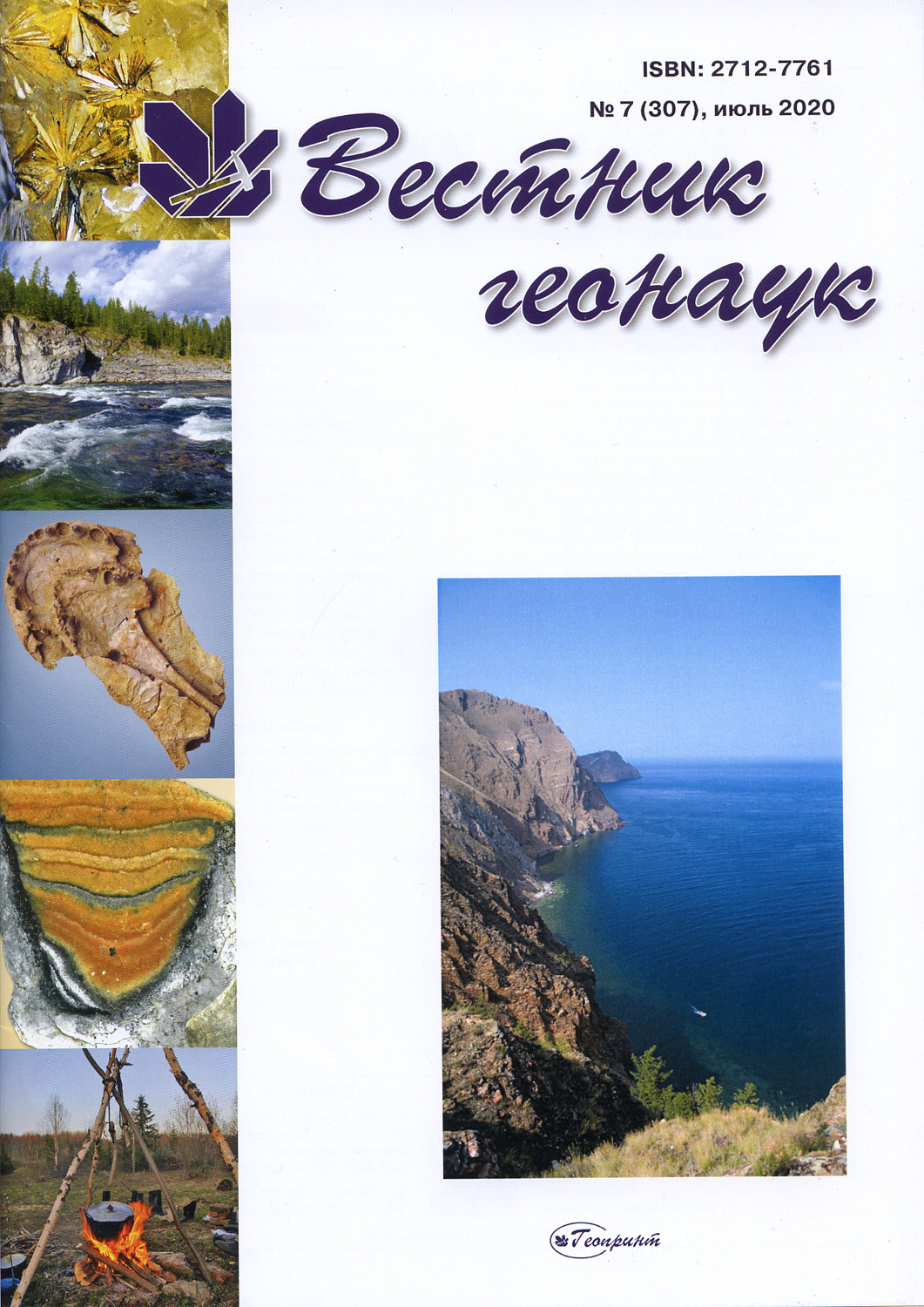|
Title page
|
1
|
|
Content
|
2
|
| |
|
|
Scientific articles
|
|
Correspondence of the distribution of microelements
in the composition of modern bacteria to the law of periodicity
of the cosmogeo-chemical distribution of chemical elements
A. V. Kokin, V. I. Silaev, N. V. Pavlovich,
D. V. Kiseleva, A. V. Slyusar
DOI: 10.19110/geov.2020.7.1
Based on the study of the composition of 8 strains of modern bacteria (Escherichia coli, Vibrio cholerae 0139, Vibrio cholerae Eltor, Francisella. Tularensis subsp. holarctica, Staphylococcus aureus), a highly sensitive ICP-MS method was used to establish for the first time that the abundance of trace elements in them in the fundamental law of atomic distribution the earth's crust. This proves the fact of the spread of the universal cosmogeochemical code to the living matter of the earth and testifies in favor of the theory of the origin of life as a result of the natural evolution of the primary cosmic matter. The correlation revealed in bacteria between sidero-chalcophilic metals — natural regulators of the synthesis of proteins, RNA and DNA — reflects the conserved signs of primogeniture of living matter on a basalt substrate. This is confirmed by the recently revealed facts of the formation of prebiological forms of organelles in the gas-ash products of modern volcanoes. It is very likely that the revealed fundamental property of modern bacteria is inherited from the primary prokaryotes that appeared on the Earth 4 billion years ago and, therefore, is the most ancient code of living matter.
Keywords: modern bacteria, microelements, primary abundance in the solar system and the earth's crust, the most ancient code of living matter.
 Download full text Download full text
|
3—8
|
Global petrology on data about
hot heterogeneous accretion of the Earth
V. S. Shkodzinskiy
DOI: 10.19110/geov.2020.7.2
Modern geological and planetary data contradict to hypothesis of cold homogenous of the Earth and shown it hot heterogeneous origin. This genesis allows convincingly to decide discussion genetic problems. The core was formed before the mantle as a result of magnetic force influence. Big power magnetic forces caused big impact heat of the core and origin of convection in the mantle. Rise of impact heat the mantle during accretion caused origin of opposite thermal gradient and absence of convection during Precambrian. Convection was formed in Proterozoic as a result of heating the mantle by the core. Rise of the mantle substance, heated by the core, resulted in big superplumes, oceans, subduction and collision areas. Rise of crystallized melts of the synaccretion magma ocean resulted in plumes and basic magmas. Crystallization of acid layer of the magma ocean resulted in crystalline crust and Precambrian complexes. Rise of residual melts from different layers of magma ocean caused evolution of magmas of ancient platform from acid to carbonatite and kimberlite. Magmas of ocean, subduction and collision areas are the result of friction and decompression melting of the magma ocean differentiates.
Keywords: genesis of geospheres, magmas and Precambrian complexes.
 Download full text Download full text
|
9—17
|
Application of Monte Carlo-type modeling method
to estimate 210Pb errors in dating of peat deposits
of the European Subarctic of Russia
(on the example of Arkhangelsk region)
E. U. Yakovlev, A. A. Ocheretenko, R. K. Spirov,
E. V. Mishchenko, E. V. Zhukovskaya
DOI: 10.19110/geov.2020.7.3
210Pb dating is а key method for studying sediments and peat deposits in the anthropocene, applicable in the time range of 100—150 years. Monte Carlo simulation was used to estimate 210Pb dating error. The approach is implemented in the format of MS Excel spreadsheets, in which the calculated parameters are core diameter, half-life of 210Pb, layer depth, dry weight, total content of 210Pb and concentration of 226Ra. The approach was tested when dating peat cores selected in the Primorsky and Mezensky districts of the Arkhangelsk region, followed by calculation of sedimentation rates.
Keywords: 210Pb dating, uncertainly, peat profile, Monte Carlo simulation, peat accumulation rate.
 Download full text Download full text
|
18—28
|
From teaching experience.
V. Fedorov’s parallelohedra
Yu. L. Voytekhovsky
DOI: 10.19110/geov.2020.7.4
The article draws attention to the fact that there are 5 Fedorov’s parallelohedra, and not 4, as some authors indicate: a triparallelohedron (cube), a tetraparallelohedron (a combination of a hexagonal prism and a pinacoid), 2 hexaparallelohedra (a rhombic dodecahedron and an «elongated rhombic dodecahedron», i. e. a combination of a tetragonal prism and a tetragonal dipyramid), a heptaparallelohedron (a special, with equal edges, combination of a cube and an octahedron). Hexaparallelohedra form in space similarly arranged and located “columns” (term of E. S. Fedorov). But they have different combinatorial types, cannot be obtained from each other by homogeneous deformations, and should be treated in the course of crystallography as different ones.
Keywords: Fedorov’s parallelohedra, combinatorial type of a convex polyhedron, homogeneous deformation.
 Download full text Download full text
|
29—31
|
History of stratigraphy partition
of Devonian sediments in Middle Timan
I. Kh. Shumilov, O. P. Tel’nova
DOI: 10.19110/geov.2020.7.5
The article provides a history of stratigraphic partition of the Devonian sediments on Middle Timan over the past 150 years. The main milestones of the local stratigraphic scheme development are described in chronological order. A retrospective analysis is aimed, first of all, at analyzing the evolution of the views of the stratigraphic partition of the Devonian sediments, which, in turn, is the basis for identifying the most problematic and relevant aspects of the geology of Middle Timan.
Keywords: Middle Timan, Devonian, history of stratigraphy.
 Download full text Download full text
|
32—36 |
| |
|
|
Chronicle, events, facts
|
| |
|
|
Reef Geology — 2020. Summary
 Download text Download text
|
37—39 |
|
|
|
Reef Geology — 2020.
Varsanofyeva: 130th birth anniversary
 Download text Download text
|
39—41 |
|
|
|
Alexey Iyevlev (60th birth anniversary)
 Download text Download text |
42—44 |













